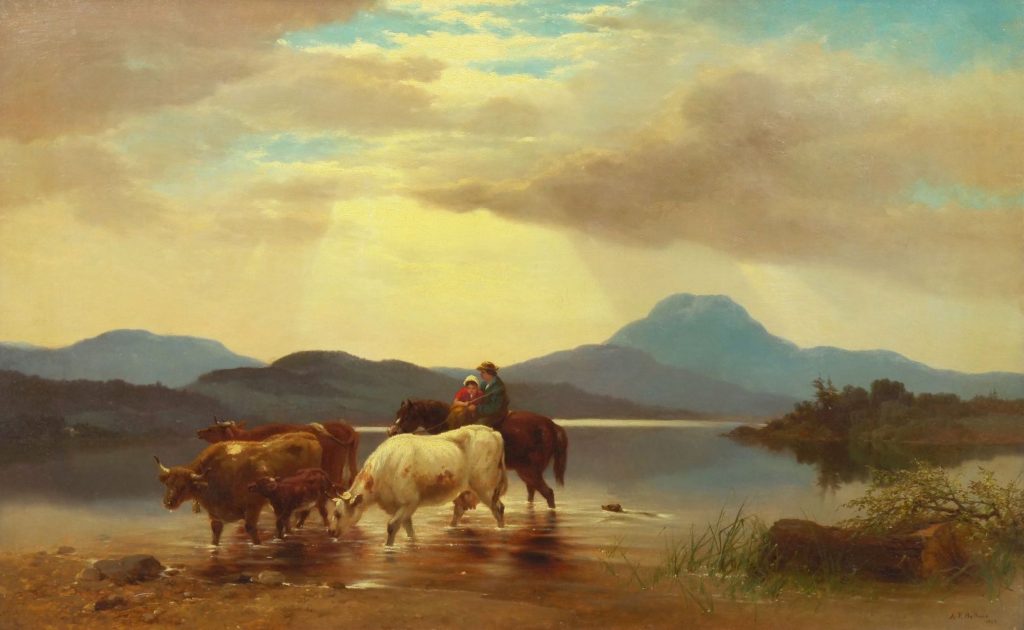Homeward Bound by Albert Fitch Bellows

This pastoral scene depicts a farmer on horseback securely embracing his young daughter as they follow their cattle through a crystalline body of water; the child holds a switch, indicating her importance in the endeavor, ensuring the drive forward. The family dog swims behind them, experience keeping the animal at safe distance from the horse’s hind legs.
The subjects are presented in a serene, mountainous landscape, with a vast expanse of sky peppered with clouds that diffuse the sunlight to various degrees of luminosity, adding a radiant grandeur to the composition. The sun’s rays majestically illuminate the figures, bathing them in light and lending a spiritual quality to the painting.
The Civil War raged in 1863 when this work was painted, and many artists, Bellows among them, sought to depict the idyllic, natural beauty of their country as a promise of better days to come.
Dedication
- Excerpt from a letter from Doug Borden to the FRHS curator: “In memory of my dear wife, Joan L. Borden. Her 90th birthday would have been 23 January 2022.”

